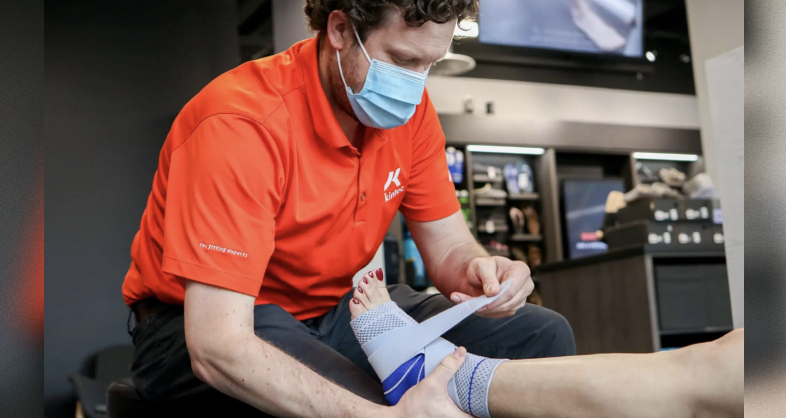
How Ankle Bracing Works
By Michael Ryan PhD, C. Ped (C)
The Ankle: The Most Commonly Injured Body Region
Braces are a common recommendation when someone injures their ankle, and we at Kintec are often asked to give more detail on how braces are effective in the management and prevention of ankle injuries. This blog will dive deeper into the how’s and why’s of ankle bracing; but first, let’s talk about the injuries that motivate us to use a brace.
The ankle is the most injured part of the body in organized sport (Doherty et al. 2014). Rapid change of direction, constant accelerations, uneven playing surfaces, and collisions with other players all contribute to the high incidence of ankle injuries. Think of any sport you play on a field with other people – such as soccer, volleyball, ultimate frisbee, and rugby – and chances are those players will be familiar with the usual routine of managing an injured ankle. Most of you will already know first aid around acute sports injuries involving rest, ice, compression, and elevation (RICE), but if you need more information on that it can be found here: Sports Injury First Aid.
Due to the high frequency of ankle injuries, it is paramount that athletes understand how to adequately recover from these injuries. Indeed, it is often said that ankle injuries, sprains in particular, are one of the worst treated injuries in sports medicine. By ‘worst treated’ experts are referring to the negative sequalae (i.e. after-effects) following inadequately treated inversion sprains in the years or decades post-injury including chronic instability, talar dome lesions, and osteoarthritis (Miklovic et al. 2018). The emphasis in acute ankle injury rehabilitation needs to include both restoration of the structural components of the ankle (such as ligaments, tendons, joint-capsule) and the neuro-mechanical aspects of how these structural elements are connected to our nervous system.
Bracing can help with both aspects of recovery. We’ve highlighted the 3 different categories of ankle bracing and how they can help manage and prevent ankle injuries.
General-Support Ankle Braces
The traditional type of ankle brace involves a sleeve or stirrup-type configuration that secures the brace onto the ankle and works primarily through two mechanisms.
Firstly, the contact of the sleeve or housing of the brace with the skin aids in what’s called the kinesthetic awareness of the joint. Kinesthetic awareness refers to the ability of our brain to recognize the position and movement of different parts of our body, and then activate the appropriate muscle groups to avoid over-stretching of that associated joint. For example, if we roll our ankle over a rock creating a rapid and forceful rolling-out motion of the ankle, receptors in the skin, muscles, joint capsule and accompanying ligaments will immediately send a signal through the spinal cord (many of these reflexes are so fast they by-pass the brain!) to initiate a rapid and forceful contraction of the peroneal muscles that counteract this inversion motion. Enhancing kinesthetic awareness is arguably the most effective way to prevent ankle injuries because of the incredible speed and responsiveness of our nervous system.
Figure 1 – Braces in order from bottom left moving clockwise are: Incrediwear Ankle Sleeve, MalleoTrainS, Aircast A60, ASO EVO stabilizer, Active Ankle Eclipse II, Aircast Air Stirrup, Aircast Walking Boot
Now, part of the problem with ankle injuries is that the receptors contributing to that kinesthetic awareness are often themselves damaged during the injury. As a result, this ‘early-warning detection system’ of the body is less effective leading to a greatly increased risk of re-injury. Therefore, the bracing material (ideally with some compression) that is placed on the skin around ankle enhances the effectiveness of these kinesthetic receptors and can play a major role in the return to play management of ankle injuries. It should not be overlooked that physiotherapy plays an integral role in this phase of the recovery by overseeing a progressive ankle re-balancing program.
The second way general-support braces work is by providing a level of external mechanical support against, primarily, side-to-side movement. Ankle braces provide this support through a gradient depending on need [see figure 1 above]. Bracing manufacturers will often use increasing amounts of semi-rigid thermoplastic components to stiffen the brace and prevent motion. Another common feature of general-support braces is the use of a ‘heel lock’ strap configuration [see heel lock figure above] that is frequently used in athletic taping applications to secure the motion of the heel bone (calcaneus) against the main ankle bone (talus).
The ultimate in general-support bracing is a walking boot that completely immobilizes both side-to-side and forward motion of the ankle. Walking boots are used in acute management of more severe ankle injuries such as high-ankle sprains, fractures (stress or frank), or dislocations.
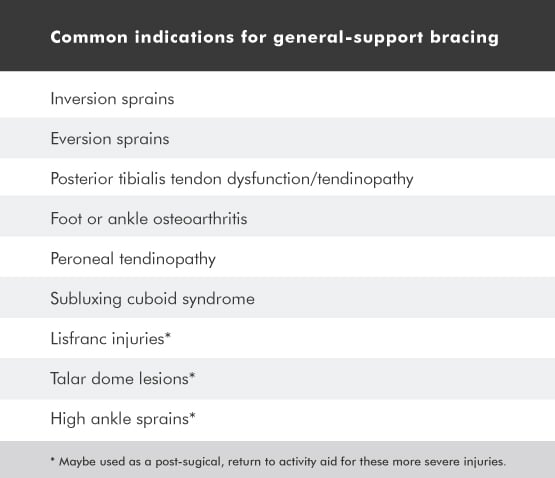
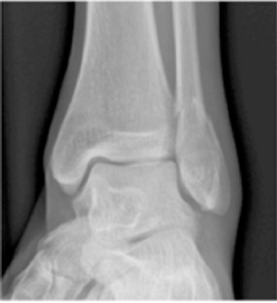 Motion-Specific Braces
Motion-Specific Braces
A nice innovation in the bracing industry is the development of braces that are made to restrict motion in only a single direction. The two principal advantages of this style of brace is dedicated design elements that improve a motion-specific brace’s effectiveness, as well as having a lot less material in other areas of the ankle that you don’t need. Bauerfeind’s MalleoLoc® is a good example of a motion-specific brace that is used to prevent ankle inversion and commonly used in the treatment and return-to-play regimen following ankle sprains. In fact, the Malleoloc® is so effective at preventing motion that it is superior to plaster casting in recovery following Type B ankle fractures (fractures of the distal fibular head)(van den Berg et al. 2018)!
Condition-Specific Braces
Our last section is devoted to ankle braces that are specifically designed to support a specific anatomical structure and its rehabilitation. The AchilloTrain® from Bauerfeind is a nice example of a brace that is top-to-bottom designed to support individuals with Achilles tendinopathy (aka tendinitis). Through a combination of the knit-fabric sleeve that assists in calf muscle activation to a uniquely contoured gel insert that both relieves pressure on the sore Achilles mid-portion and reduces stress on the muscle-tendon junction, the AchilloTrain® is a good early treatment option.
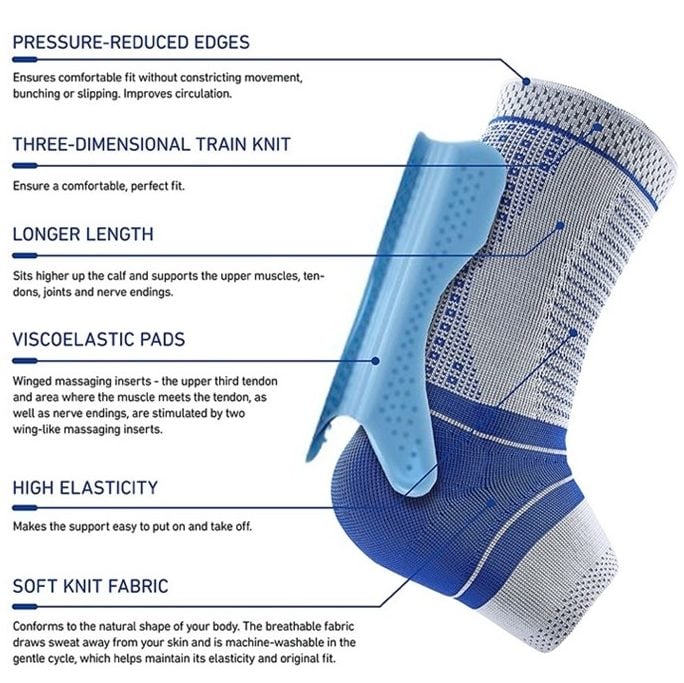
Summary
Ankle braces can play an important role in the recovery from a variety of ankle injuries, not just inversion sprains. Braces work primarily through helping to augment the body’s kinesthetic awareness that is the body’s early warning detection system when a joint begins to move beyond normal limits. Ankle braces also provide a measure of external mechanical support that we measure along a continuum.
Have you recently suffered from an ankle injury?
If you’re unable to weight-bear on the affected leg at any point, OR if you have pain or instability lasting longer than 10-days – it’s time to see a doctor. It’s important to note that many extended insurance plans will cover a portion of the cost for an ankle brace when there is a physician’s prescription.
Curious if an ankle brace can help in your recovery? Book a free 15-min consultation and talk to a Kintec Bracing Specialist. Our team of experts will educate you on the different types of bracing and discuss treatment options for your specific injury.

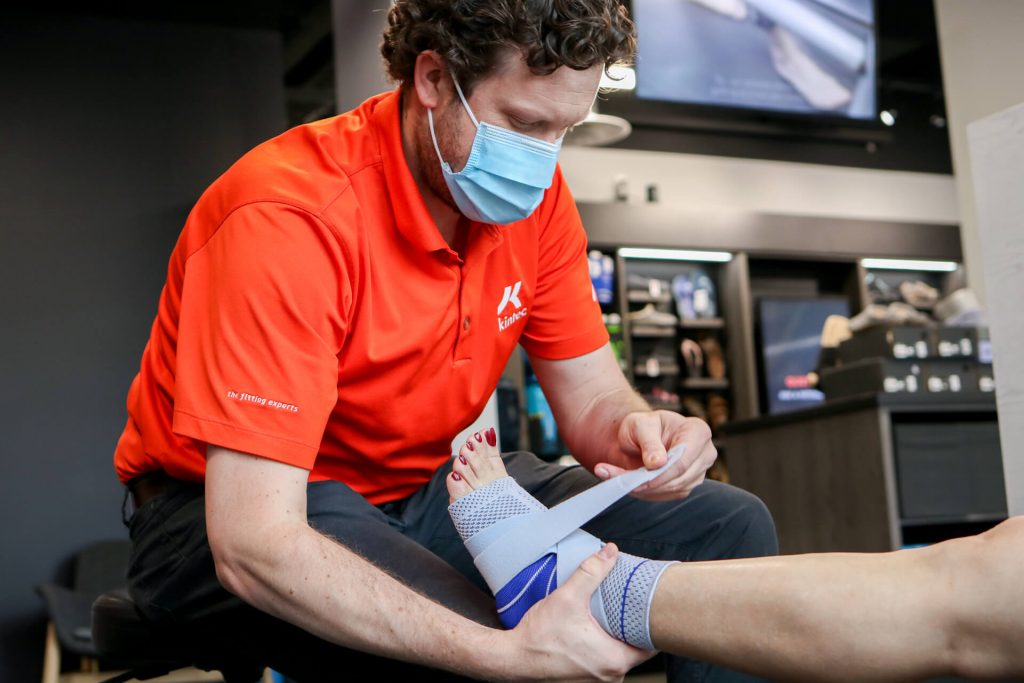
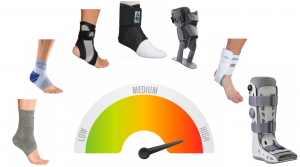

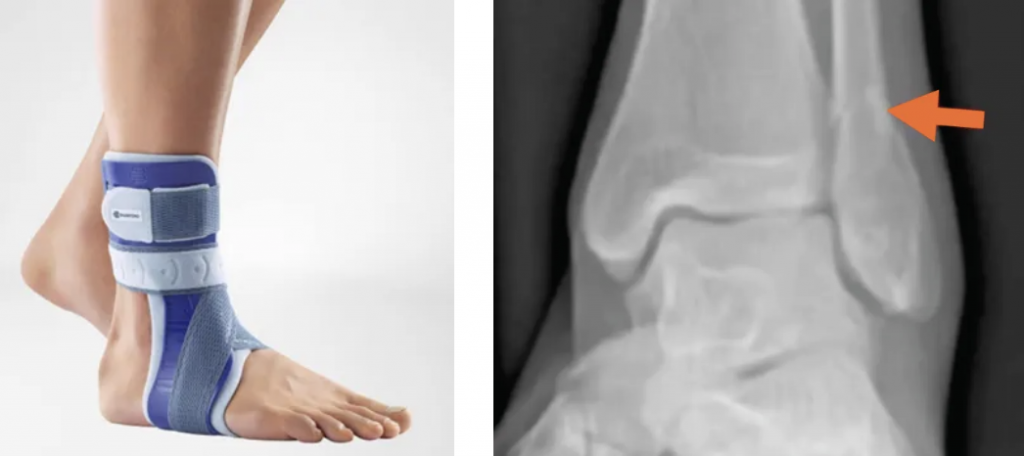
Beryl McBride
January 13, 2021 at 1:01 pmWhat type of brace is needed for Foot drop?
Michael Ryan - Director of R&D
January 21, 2021 at 11:46 amHello Beryl, In cases of foot drop there is a need for the ankle brace to assist in pulling the foot ‘upwards’ toward the leg. In order for the brace to do that, it must also integrate with the foot in a product called an Ankle-Foot Orthosis or AFO. In cases of mild foot drop, we have an over-the-counter product called the Dictus Brace that simply wraps around the ankle and then links with the lacing of your footwear: https://shop.kintec.net/erimed-dictus-afo/.
Lou P
April 4, 2022 at 10:22 amwhat is the best brace for OCD’s in the talus
Michelle - Customer Service
April 9, 2022 at 4:07 pmHi Lou, this would depend on your individual needs. I would recommend speaking with your doctor to get a recommendation. We can size for over the counter ankle bracing, but can also make a custom AFO (ankle-foot orthosis) depending on what would be most appropriate to your situation.
Jessica A
June 6, 2023 at 8:22 pmWhat ankle brace do you recommend for severe OA of the medial malleolus, likely related to ipsilateral genu valgus?
Could I assume that medial off loading brace for the knee will also reduce valgus at the ankle. So do you brace both joints?
Michelle - Customer Service
September 2, 2023 at 9:56 amHi Jessica,
If you’d like I can have one of our clinicians reach out to you. Please feel free to email us at [email protected] and we can direct you to the right person.
ankle support braces
June 18, 2024 at 10:51 am“I’ve been using ankle support braces for my workouts lately, and they’ve made a huge difference! No more discomfort or fear of spraining my ankle. Highly recommend them!